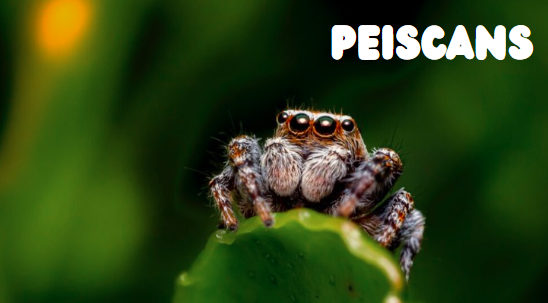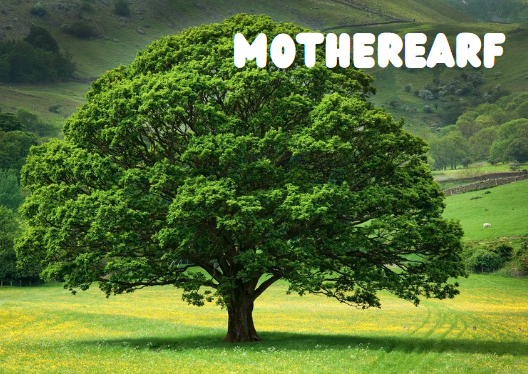Peiscans: A Comprehensive Exploration of This Fascinating Species
Introduction
Peiscans are a unique and intriguing species that have captivated the interest of scientists, wildlife enthusiasts, and nature lovers alike. Despite their lesser-known status, Peiscans possess a set of fascinating characteristics that distinguish them from other species. From their distinct habitats and behaviors to their specialized diets, Peiscans offer a wealth of knowledge for those eager to delve deeper into the mysteries of the natural world.
This article aims to provide an in-depth exploration of Peiscans, offering insights that go beyond the typical information available online, while also optimizing for the keyword “peiscans” to ensure it ranks highly in search engine results.
What Are Peiscans? Understanding the Basics
Peiscans are a species that has garnered interest due to their unique features and behaviors. They belong to a specific ecological niche that makes them stand out among other wildlife species. Though there isn’t a wealth of information available on Peiscans, what we do know paints a picture of a species with distinct adaptations that allow them to thrive in their particular environment.
The Origin of Peiscans
The origin of the term “Peiscans” is somewhat obscure, but it is believed to be derived from the Latin word piscis, meaning “fish,” combined with elements that suggest their land-dwelling nature. This combination hints at the Peiscans’ unique ability to adapt to both aquatic and terrestrial environments, making them a species of particular interest in the study of evolutionary biology.
Habitat: Where Do Peiscans Live?
One of the most intriguing aspects of Peiscans is their habitat. Peiscans are typically found in regions that offer a blend of aquatic and terrestrial environments. This dual habitat requirement is rare among species and suggests a high level of adaptability and specialization.
Preferred Environment
Peiscans are most commonly found in wetland areas where water bodies are interspersed with dry land. This environment provides them with the resources they need to survive, including access to both water-based and land-based food sources. Wetlands also offer Peiscans a variety of microhabitats, from shallow waters to dense vegetation, allowing them to exhibit a range of behaviors depending on the conditions.
Geographic Distribution
The geographic distribution of Peiscans is relatively limited, which may contribute to their lesser-known status. They are primarily found in temperate regions where wetland ecosystems are abundant. In the United States, Peiscans have been observed in specific locations along the East Coast, particularly in states such as Florida and Georgia, where wetland environments are prevalent.
Behavior: The Unique Ways of Peiscans
Peiscans are known for their unique behaviors, which are closely tied to their dual habitat lifestyle. Understanding these behaviors offers valuable insights into how Peiscans have adapted to survive in their specific environments.
Social Structure and Interaction
Peiscans exhibit a complex social structure, often forming small groups that work together to forage and protect their territory. These groups are usually composed of related individuals, suggesting a strong familial bond that plays a critical role in their survival. Peiscans communicate with each other through a series of vocalizations and body language, which are used to coordinate group activities and warn of potential threats.
Feeding Habits
The diet of Peiscans is another area where their adaptability shines. Peiscans are omnivorous, feeding on a variety of food sources depending on what is available in their environment. Their diet typically includes small fish, aquatic plants, insects, and occasionally, small mammals. This varied diet allows them to thrive in environments where food availability can fluctuate seasonally.
Reproductive Behavior
Peiscans have a unique reproductive strategy that is closely tied to their environment. Breeding typically occurs during the wet season when resources are abundant, and the environment is most conducive to raising offspring. Female Peiscans lay their eggs in secluded, water-protected areas, often among dense vegetation where the eggs can remain hidden from predators. The offspring are cared for by the group, with multiple adults taking on the role of protecting and feeding the young.
Diet: What Do Peiscans Eat?
The diet of Peiscans is both varied and specialized, reflecting their adaptability to different environments. Their omnivorous nature allows them to take advantage of a wide range of food sources, which is crucial for their survival in habitats that can vary greatly in resource availability.
Aquatic Food Sources
In aquatic environments, Peiscans primarily feed on small fish and aquatic invertebrates. They are skilled hunters, using their sharp eyesight and quick reflexes to catch prey in the water. Peiscans are also known to consume aquatic plants, which provide essential nutrients and help them maintain a balanced diet.
Terrestrial Food Sources
On land, Peiscans forage for insects, small mammals, and plant material. Their diet on land is more opportunistic, allowing them to take advantage of whatever food sources are available. This flexibility in diet is one of the key factors that enable Peiscans to thrive in a variety of environments.
Seasonal Variations in Diet
The diet of Peiscans can vary significantly with the seasons. During the wet season, when water bodies are full and aquatic life is abundant, Peiscans focus more on water-based food sources. In contrast, during the dry season, they shift their focus to land-based food sources, demonstrating their remarkable adaptability.
Evolutionary Adaptations: How Peiscans Thrive in Dual Environments
The evolutionary adaptations of Peiscans are what truly set them apart from other species. Their ability to thrive in both aquatic and terrestrial environments is the result of a series of unique adaptations that have developed over time.
Physical Adaptations
Peiscans possess a number of physical adaptations that enable them to survive in their dual environments. These include webbed feet, which aid in swimming, and strong, muscular legs that allow them to move efficiently on land. Their bodies are streamlined for swimming, but also sturdy enough to navigate the rough terrain of wetlands.
Behavioral Adaptations
In addition to physical adaptations, Peiscans have developed a range of behaviors that help them survive in their challenging habitats. These behaviors include group foraging, which increases their chances of finding food, and coordinated group defense mechanisms to protect against predators.
Reproductive Adaptations
The reproductive strategies of Peiscans are also adapted to their environment. By timing their breeding season to coincide with the wet season, Peiscans ensure that their offspring are born into an environment where resources are plentiful, increasing their chances of survival.
Conservation Status: Are Peiscans Endangered?
Given their specialized habitat requirements and limited geographic distribution, there is concern about the conservation status of Peiscans. Wetland environments, where Peiscans primarily reside, are among the most threatened ecosystems in the world, facing pressures from human development, pollution, and climate change.
Threats to Peiscans
The primary threats to Peiscans include habitat loss due to wetland drainage and development, pollution of water bodies, and climate change, which can alter the delicate balance of their habitats. In addition, because Peiscans have a relatively small geographic range, they are particularly vulnerable to these threats.
Conservation Efforts
Conservation efforts aimed at protecting Peiscans focus on preserving wetland habitats and ensuring that these environments remain viable for the species. This includes initiatives to restore degraded wetlands, protect existing wetland areas from development, and mitigate the impacts of climate change. Public education and awareness campaigns are also critical in garnering support for Peiscan conservation efforts.
Peiscans in Culture and Mythology
Peiscans, while not widely known, have made their way into the folklore and mythology of some cultures, particularly those that live near wetland areas. These stories often highlight the Peiscans’ unique characteristics and their ability to thrive in challenging environments.
Peiscans in Native American Mythology
In some Native American cultures, Peiscans are revered as symbols of adaptability and resilience. Stories tell of Peiscans that could move between worlds—water and land—bringing messages from the spirits and teaching humans how to live in harmony with nature. These myths often portray Peiscans as wise and powerful beings, capable of great feats.
Modern Cultural References
In modern times, Peiscans have been the subject of various artistic works, including paintings, sculptures, and literature. These works often focus on the mysterious and elusive nature of Peiscans, celebrating their uniqueness and the wonder they inspire.
The Role of Peiscans in Ecosystems
Peiscans play a crucial role in the ecosystems they inhabit. As both predators and prey, they help maintain the balance of the food web in their habitats. Their presence in wetland ecosystems is an indicator of the health of these environments.
Ecological Impact
As predators, Peiscans help control populations of small fish and invertebrates in aquatic environments, preventing these populations from becoming too large and disrupting the ecosystem. As prey, they provide food for larger predators, including birds of prey and larger mammals.
Indicator Species
Peiscans are considered an indicator species, meaning their presence (or absence) can provide valuable information about the health of their ecosystem. A thriving population of Peiscans suggests a healthy, balanced ecosystem, while a decline in their numbers may indicate environmental problems, such as pollution or habitat degradation.
Research and Scientific Studies on Peiscans
Scientific interest in Peiscans has grown in recent years, with researchers seeking to learn more about this unique species and its role in the environment. Studies on Peiscans cover a range of topics, from their behavior and diet to their conservation status and the impacts of climate change on their habitats.
Behavioral Studies
Behavioral studies on Peiscans have provided valuable insights into their social structure, feeding habits, and reproductive strategies. These studies have helped to deepen our understanding of how Peiscans interact with their environment and how they have adapted to survive in their specific habitats.
Conservation Research
Conservation research is critical to ensuring the survival of Peiscans. Studies focusing on the impacts of habitat loss, pollution, and climate change on Peiscan populations have highlighted the need for targeted conservation efforts to protect this species.
Genetic Research
Genetic research on Peiscans is also underway, with scientists examining the genetic diversity of Peiscan populations. This research is important for understanding the evolutionary history of Peiscans and for developing strategies to preserve their genetic diversity, which is crucial for their long-term survival.
How to Observe Peiscans in the Wild
For those interested in observing Peiscans in their natural habitat, there are a few key things to keep in mind. Peiscans are elusive creatures, so patience and careful observation are essential.
Best Times and Locations
The best time to observe Peiscans is during the wet season when they are most active and visible. Wetland areas along the East Coast of the United States, particularly in Florida and Georgia, are prime locations for Peiscan sightings. Early morning and late afternoon are the best times to observe Peiscans, as they are most active during these periods.
Tips for Observation
When observing Peiscans, it’s important to be quiet and move slowly to avoid startling them. Bringing binoculars or a camera with a zoom lens can help you get a closer look without disturbing the animals. It’s also helpful to learn about their behavior patterns beforehand so you can anticipate where they might be and what they might be doing.
FAQs About Peiscans
What do Peiscans eat?
Peiscans are omnivorous, feeding on a variety of food sources including small fish, aquatic plants, insects, and small mammals. Their diet varies depending on the season and the availability of food in their environment.
Where can Peiscans be found?
Peiscans are typically found in wetland areas along the East Coast of the United States, particularly in states like Florida and Georgia. They require environments that offer a blend of aquatic and terrestrial habitats.
Are Peiscans endangered?
While Peiscans are not currently listed as endangered, they face threats from habitat loss, pollution, and climate change. Conservation efforts are focused on protecting their wetland habitats to ensure their long-term survival.
How do Peiscans communicate?
Peiscans communicate through a combination of vocalizations and body language. These communications are used to coordinate group activities, warn of danger, and strengthen social bonds within their groups.
Can Peiscans be kept as pets?
Peiscans are wild animals with specialized habitat and dietary needs. They are not suitable to be kept as pets and should be observed and appreciated in their natural habitats.
Conclusion
Peiscans are a remarkable species that offer a window into the complex and fascinating world of wetland ecosystems. Their unique characteristics, from their dual habitat lifestyle to their complex social behaviors, make them a subject of great interest for researchers and wildlife enthusiasts alike.
As threats to their habitats continue to grow, it is more important than ever to understand and protect these unique creatures. By raising awareness and supporting conservation efforts, we can help ensure that Peiscans continue to thrive in their natural environments for generations to come.






